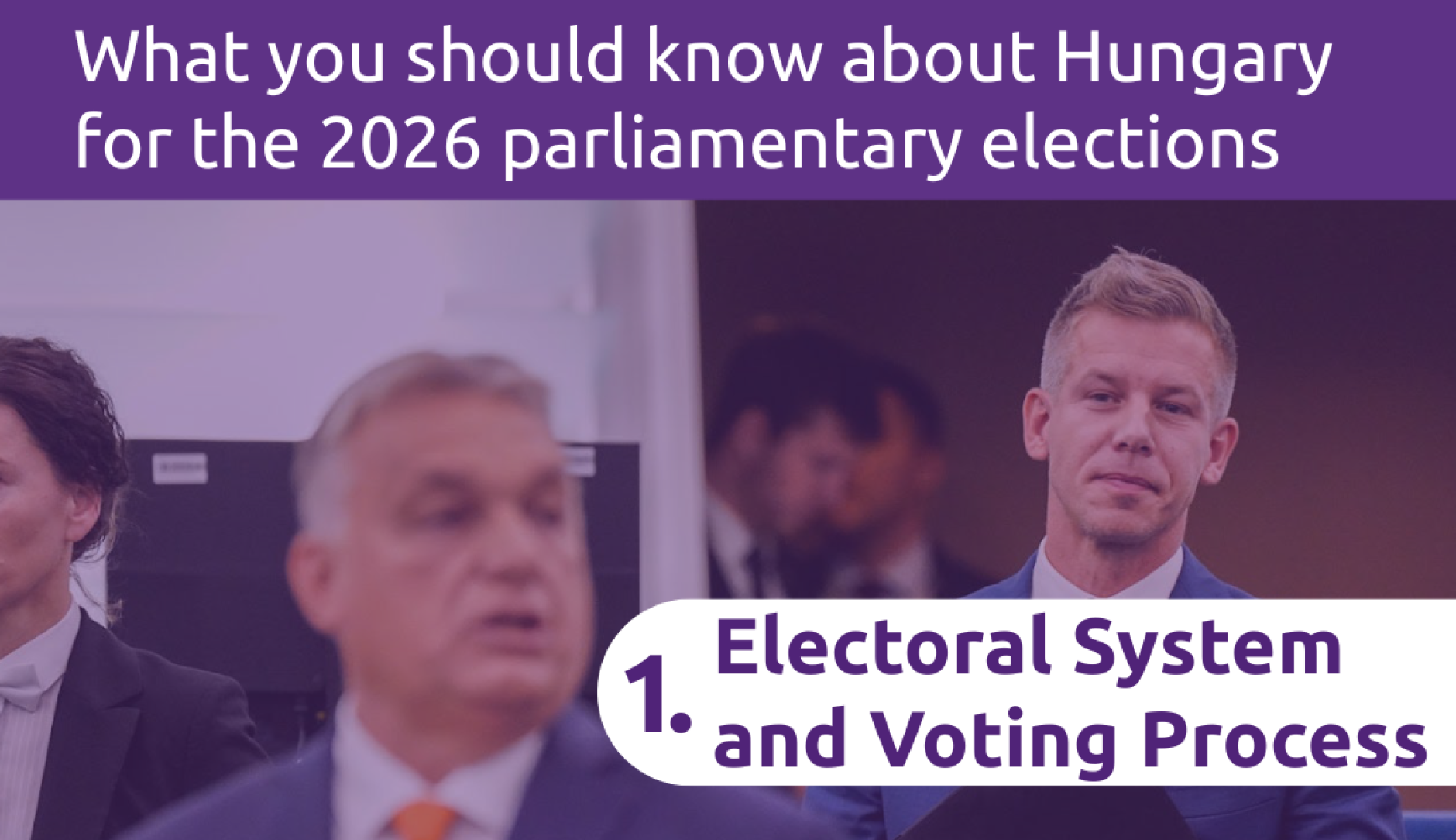Hungarian elections explained I.
In Hungary we are slowly closing to the 2026 parliamentary elections, which will be next April. We would like to help you understand it better.
In the coming months, we would like to introduce the Hungarian electoral system and the unique environment of the elections in Hungary. Sometimes even Hungarians find the system confusing.
We would like our European environment to understand a little better what is happening in our country. This way, hopefully, our story will reach more people.

Hungary’s parliamentary elections use a mixed electoral system to elect the 199 members of the National Assembly every four years. This system combines majoritarian and proportional representation elements.
Electoral System and Voting Process
Hungarian citizens with a local address have two votes: one for a candidate in their single-member constituency and one for a national party or minority list. There are 106 single-member districts, each electing one candidate by first-past-the-post—the candidate with the most votes wins. Additionally, voters choose a national party list or minority list. Hungarians living abroad without a local address may only vote for a national party list by mail.
Out of the 199 seats:
106 seats are filled by district winners.
93 seats are allocated proportionally from national party or minority lists.
Parties must pass electoral thresholds to win list seats:
5% for individual parties,
10% for two-party coalitions,
15% for coalitions of three or more parties.
Special minority lists for recognized ethnic minorities have a much lower threshold, around 0.27%, allowing minorities to have a parliamentary spokesman even if they don’t reach the full quota.
Seat Distribution and Vote Compensation
Votes for losing district candidates ("fragment votes") and surplus votes for winning candidates are added to the party list totals to enhance proportionality and compensate parties whose district votes did not translate into seats. This mechanism encourages greater fairness in representation.
Constituency Boundaries and Voting Rules
The government draws constituency boundaries, raising concerns about potential gerrymandering to favor the ruling party. Voting is direct, secret, and universal, with only one round per district—the candidate with the plurality wins.
Political System Overview
Hungary is a unitary parliamentary republic with the following key institutions:
President: Ceremonial head of state.
Prime Minister: Head of government (currently Viktor Orbán).
National Assembly: Unicameral legislature with 199 members.
Judiciary: Constitutionally independent but accused of political influence.
Political Parties and Ideologies
Fidesz–KDNP: Right-wing, national-conservative ruling coalition. (PfE)
TISZA Party: New center-right opposition gaining momentum. (EPP)
Democratic Coalition (DK): Center-left, pro-European. (S&D)
Momentum Movement: Centrist-liberal, pro-European. (RE)
Jobbik: Nationalist, formerly far-right but now more moderate. (-)
MKKP: Originally a satirical party, center-left, pro-European. (PPEU)
Mi Hazánk: Far-right, nationalist, and irredentist. (ESN)
(Not all of the mentioned parties plan to participate in the 2026 elections)
Minority Representation
Recognized national minorities, such as German Hungarians, can vote on special minority lists. If they do not meet the threshold for full representation, they may send non-voting spokespersons to parliament.
Election Timing and Administration
Parliamentary elections occur every four years, usually in April or May.
Local elections and European Parliament elections take place every five years.
The National Election Office administers elections, with Election Commissions ensuring fairness and legality.
Democratic Challenges and Controversies
Hungary faces criticism from the European Union concerning rule-of-law violations, limited judicial independence, media control, and restrictions on civil society. Since gaining a supermajority in 2010, the ruling party has enacted significant constitutional and legal reforms. Additionally, Hungary’s close relationship with Russia under Prime Minister Orbán has raised questions about its geopolitical positioning within the EU.